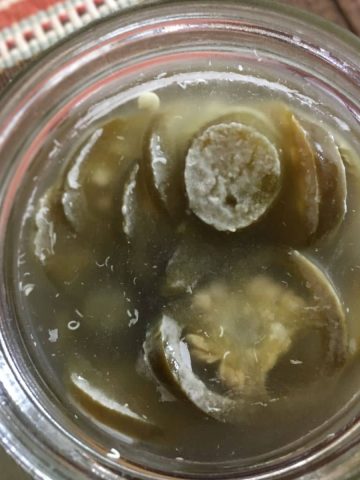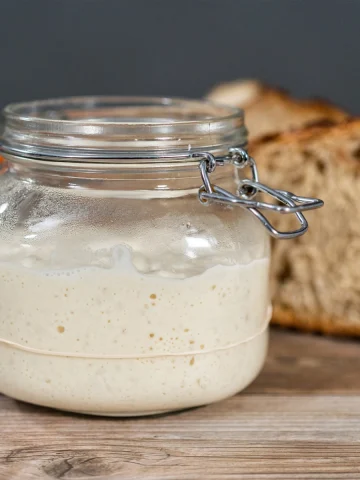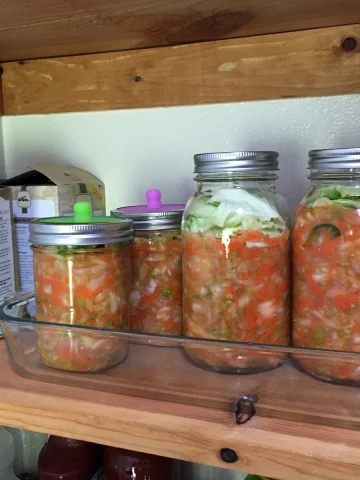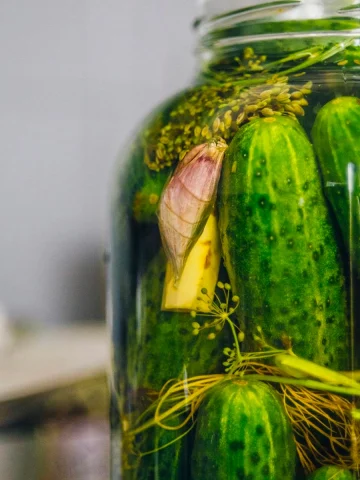Hate Mushy Sauerkraut? Try These Easy Tips for Perfect Texture Every Time
It can be disappointing to put all the time into fermenting sauerkraut only to find the texture is too mushy or soft. Good sauerkraut is famous for its nice crunch and delicious sour taste.
No matter what vegetable you ferment, there are a few essential steps to follow that will make a big difference to the result.
What makes fermented cabbage lose texture, and how can we prevent mushy sauerkraut?
Is mushy sauerkraut safe to eat?
If the sauerkraut smells right and there is no mold or yeast build-up, it is most likely safe to eat.
If you dig down in the jar, you might find the lower layers are perfectly crunchy.
Mushy sauerkraut is NOT safe to eat if the smell, color, or taste is off or if it has a slimy texture. Be safe and toss it out!
What to do with mushy sauerkraut?
Mushy sauerkraut is still safe to eat in most cases — don't through your mushy sauerkraut out just yet.
Try adding it to a soup recipe, guacamole, or salad. It is still full of flavor and will enhance many dishes. I like it in potato salad because the pickles, onions, and celery provide the crunch missing from the sauerkraut.
Related Topic: 10 Ways to Eat Sauerkraut
Sauerkraut That is Too Soft or Mushy
If you prefer sauerkraut with a nice crunch, opening up your jar to find mush can be heartbreaking.
Soft sauerkraut results when bacteria generally do not initiate growth until the later stages of sauerkraut production, usually due to too high fermentation temperatures or low salt.
You can't rescue the current batch but adjust one or all the salinity, temperature, and time dials for future batches.
Learn all about the best temperature for fermentation, small-batch sauerkraut recipe.
What causes mushy sauerkraut, and how to prevent it?
We can't all be master fermenters from the start, which is why your sauerkraut might have turned out mushy with the texture of a sponge. But that doesn't mean you have to give up fermenting cabbage — there are simple ways to prevent mushy sauerkraut texture in the future.
Temperature, time, and salt are the leading causes behind mushy sauerkraut.
Tips for Preventing Soft Mushy Sauerkraut
The texture of your finished sauerkraut can range from mushy to crisp and crunchy, with everything in between. Batch variations occur throughout the year, usually due to the temperature you are fermenting.
Temperature: Always ferment at cooler temperatures to prevent future batches of sauerkraut from turning out soft and mushy. This is important during the first week of fermentation, when the growth of the bacteria is just starting.
Ideal Temperature Range for Femrenting Sauerkraut: 60° F (16° C) to 70° F (21° C)
The temp range allows the fermentation to take place at a slow enough pace to support the growth of bacteria and allow for the development of complex flavors and the best texture.
Fermenting over 72° F (22° C) is too warm:
The warmer temp causes a more rapid formation of acid, often resulting in a mushy, soft, and even pink sauerkraut.
The warmer temps will cause the pectin-eating bacteria to be more active and break down the vegetables into soft and mushy textures.
Time: Ferment for a shorter period. Please don't set it and forget it. Taste it every few days at the one-week mark until it is at your preferred texture. Then put it in the refrigerator.
Salt: A higher salinity will slow down fermentation. Bump up your salt numbers just a little bit. For one quart (liter) batch, add a bit more salt: ½ teaspoon (4 grams).
The more salt you add and the slower the fermentation equels the longer the vegetables will stay crisp.
Use 16 grams of salt for 800 grams (1¾ pound) of prepared cabbage, including the added ingredients such as carrots, peppers, and onions.
Salt neutralizes pathogenic microorganisms and allows good bacteria to establish themselves before bad ones.
Salt draws water out of the cabbage and creates a natural brine full of nutrients for the microorganisms. Salt prevents exposure to oxygen by covering them and creating the perfect environment for Lacto-fermentation.
Use good quality salt like Himalayan Pink and Redmond Real Salt. Both contain naturally occurring minerals and are considered mineral-rich dry salt.
Always avoid salts with preservatives or iodine—that can potentially interfere with fermentation.
Use a food scale to determine the correct amount of salt. After you have made a few batches and are familiar with the salt volume you are using, you can use a measuring spoon.
Related Topic: How much Salt to make Sauerkraut, How To Fix Salty Pickles
Storage: Store ferments in a cool place.
When the sauerkraut is fermented, which means it tastes sour enough for you, move it into the refrigerator or cold storage. The basement, root cellar, or a cool area in your kitchen will work.
If you leave it at a warm temperature, it will continue to ferment, which isn't necessarily bad, but it may cause the sauerkraut to become too sour or too soft for your liking.
Another question I often see is, why did my sauerkraut turn brown on top? And how to fix salty sauerkraut? I answered that question in its post, which is worth a read.
Takeaway: How to salvage mushy sauerkraut? Is it still safe to eat mushy sauerkraut? How to prevent mushy saurkraut.
Mushy sauerkraut can result from four main errors, temperature, time, quality of the salt used, and storage method.
Fortunately, strategies such as fermenting sauerkraut in the correct temperature range for the right time frame and using quality salt can prevent you from having soft and mushy sauerkraut.
And always make sure your sauerkraut isn't bad! Bad sauerkraut is a health risk and an unpleasant eating experience. If it smells off, the color is off; the taste is off, then toss it out.





